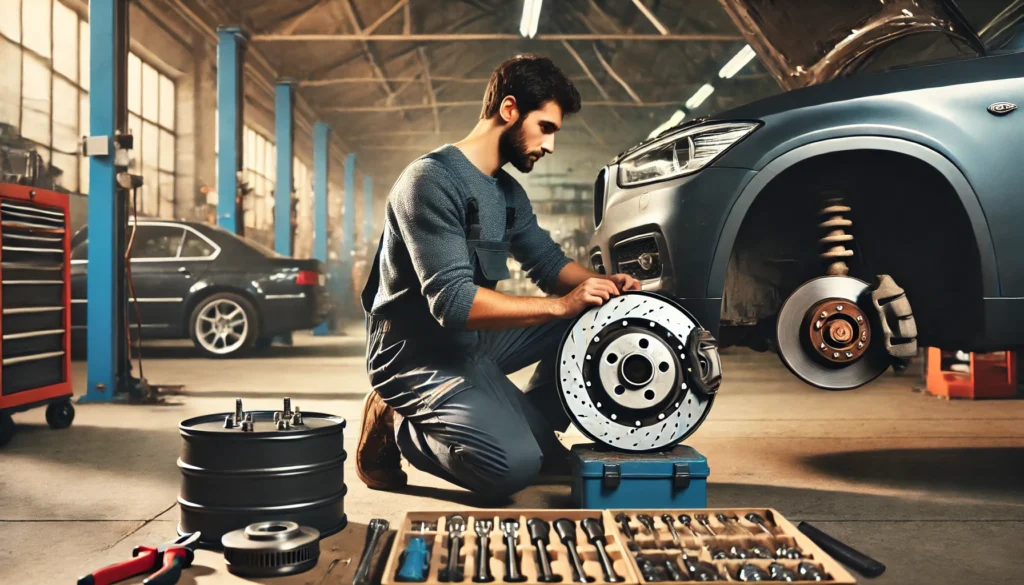Brake disc replacement is crucial for maintaining vehicle safety and optimal braking performance. Worn-out or damaged brake discs can lead to decreased braking efficiency, increased stopping distance, and potential accidents. This guide covers the importance of replacing brake discs, signs of wear, and the replacement process.
Importance of Brake Disc Replacement
Brake discs play a critical role in the braking system, converting kinetic energy into heat to slow down or stop the vehicle. Over time, they wear out due to friction and heat. If not replaced on time, worn discs can cause vibrations, reduced braking power, and even brake failure. Regular inspection and timely replacement ensure safety and enhance vehicle performance.
Signs Your Brake Discs Need Replacement
- Vibrations While Braking: If you feel vibrations or pulsations through the brake pedal, it indicates warped or unevenly worn brake discs.
- Squeaking or Grinding Noise: A high-pitched squeak or grinding noise suggests the brake pads are worn down, possibly damaging the discs.
- Reduced Braking Efficiency: Longer stopping distances or a soft brake pedal feel indicate worn brake discs.
- Visible Damage or Warping: Deep grooves, cracks, or a bluish tint on the brake discs indicate overheating and require immediate replacement.
Brake Disc Replacement Process
- Step 1: Preparation and Safety: Park on a flat surface, engage the parking brake, and use wheel chocks. Loosen the wheel nuts before lifting the vehicle with a jack.
- Step 2: Removing the Old Brake Disc: Remove the wheel and brake caliper. Secure the caliper to prevent stress on the brake hose. Remove the old brake disc by unscrewing any retaining screws.
- Step 3: Installing the New Brake Disc: Clean the hub surface to prevent alignment issues. Install the new brake disc and secure it with retaining screws. Reattach the brake caliper and wheel.
- Step 4: Testing and Final Check: Lower the vehicle and tighten the wheel nuts. Pump the brake pedal to ensure proper pressure. Test drive the vehicle at low speeds to check the braking performance.

